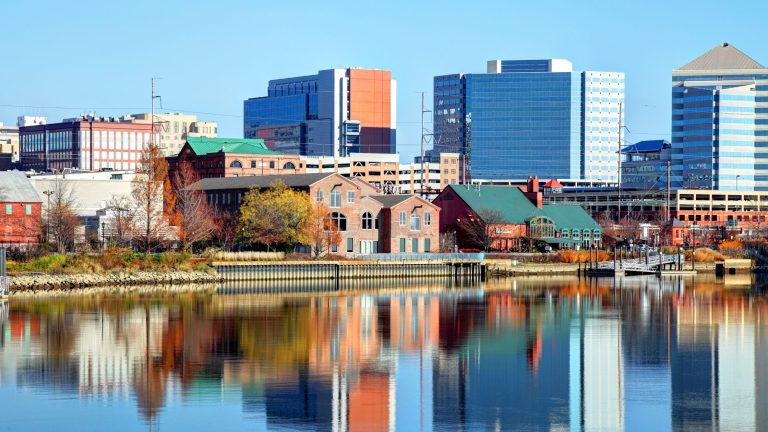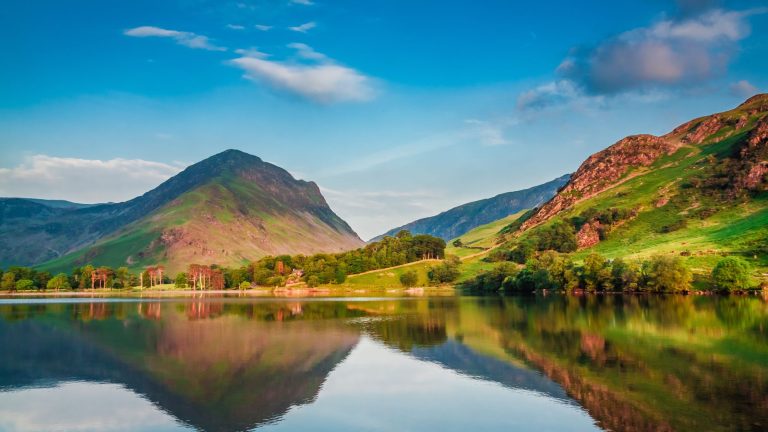Your Perfect 2026 Timing Guide for Adriatic Adventures and Lakeside Wonders
Picture yourself gliding through turquoise waters beneath Dubrovnik’s medieval walls, the morning sun transforming limestone cliffs into liquid gold. Now imagine those same waters in different seasons, crystalline and bracing in May’s return, bath-warm and inviting during August’s peak, or hauntingly beautiful under December’s moody skies.
Croatia’s temporal rhythms create entirely different countries throughout 2026, each month orchestrating unique symphonies of weather, water, crowds, and cultural celebrations. Whether you’re drawn to Plitvice’s cascading terraces when spring snowmelt swells every waterfall, or prefer September’s golden light painting Hvar’s lavender fields, understanding Croatia’s seasonal personality transforms good trips into aptly timed ones.
The magic of Croatian timing lies not just in weather patterns but in how seasons unlock different experiences. July brings beautiful music to Dubrovnik’s prized venues, while November delivers truffle-hunting adventures through Istria’s misty forests.
Your perfect Croatian moment in 2026 depends on what stirs your soul—is it swimming in hidden coves when the Adriatic reaches its 27°C peak, or walking Dubrovnik’s walls in February solitude? Let’s navigate Croatia’s calendar together, revealing when lakes sparkle brightest, when ferry schedules favor island-hopping dreams, and when your travel budget stretches furthest along this spectacular coastline.
What Are the Best Months to Visit Croatia in 2026?
The Sweet Spots: May-June and September-October
Croatia’s golden windows arrive when spring fully blooms and summer gently fades. May and June deliver that perfect alchemy—air temperatures hovering between 19-28°C (66-82°F) along the coast, while the Adriatic warms from a bracing 17°C to a swimmable 23°C. These months reward early risers with misty mornings over Plitvice’s upper lakes, where boardwalks remain uncrowded and waterfalls thunder at full spring volume. Ferry schedules ramp up to summer frequency without the July reservation anxiety, making spontaneous island-hopping from Split to Vis or Hvar delightfully feasible.
September emerges as Croatia’s best-kept seasonal secret, when the Adriatic maintains its summer warmth (22-25°C) while tourist tides recede. October extends this magic inland, where Plitvice’s forests explode into autumn colors and Istria’s truffle season peaks with weekend festivals in hilltop towns like Motovun and Buzet.
Peak Season Realities: July-August Intensity
Summer’s crescendo brings undeniable pleasures—the Adriatic reaches its annual peak of 24-27°C (75-81°F), every beach bar pulses with energy, and ferry connections create an aquatic highway linking hundreds of islands. July transforms quiet coastal towns into 24-hour celebrations, with Dubrovnik Summer Festival staging Shakespeare beneath stars. August delivers Croatia at maximum intensity: families fill every available beach umbrella, sailing yachts pack hidden coves, and Hvar Town’s waterfront becomes Europe’s most glamorous catwalk.
Yet this popularity demands strategic planning. Book ferries weeks ahead for weekend crossings, reserve restaurants for sunset slots, and accept that Dubrovnik’s walls will feel like a medieval highway during midday.
Savvy summer travelers adapt by starting early—walking those famous walls at 8 AM when morning light creates photography magic, claiming beach spots before 10 AM, and embracing afternoon siestas when heat peaks at 33°C (91°F). Consider basing yourself on less-discovered islands like Šolta or Lastovo, using them as peaceful launching pads for day trips to hotspots.
How Does Croatia’s Weather Change Through the Seasons?
Spring Delights: March Through May
Spring arrives unevenly across Croatia, creeping north from Dubrovnik’s early March mimosas to Zagreb’s late April chestnuts. Coastal temperatures climb from 12°C to 23°C through the season, while the Adriatic slowly warms from a wetsuit-mandatory 13°C to a bracingly refreshing 20°C by May’s end. This is when Krka National Park showcases its most dramatic face—snowmelt from the Dinaric Alps swells the Krka River, sending torrents over travertine barriers. At the same time, emerald pools remain mirror-still between cascades.
Note that swimming isn’t permitted at Krka or Plitvice, but nearby Vrana Lake offers cycling paths and birdwatching as migrating species pause during their northward journey.
Inland regions experience spring’s theatrical mood swings—brilliant sunshine alternating with dramatic thunderstorms that roll across the Pannonian Plain. Pack layers and a reliable rain jacket, but don’t let changeable weather deter you. Some of Croatia’s most memorable moments happen during spring’s atmospheric displays: watching storm clouds build over Paklenica’s limestone peaks, or catching rainbow arcs spanning Plitvice’s Kozjak Lake after afternoon showers.
Summer’s Mediterranean Embrace: June Through August
Croatian summer arrives with Mediterranean certainty—long, bright days stretching past 9 PM, with coastal temperatures locked between 27-33°C (81-91°F). The Adriatic transforms into Europe’s warmest swimming pool, particularly in shallow bays around Nin and the Makarska Riviera, where temperatures can reach a bathtub-like 27°C. This reliable weather enables the full spectrum of water activities: dawn SUP sessions when the sea lies glass-flat, afternoon sailing with predictable maestral winds, and sunset kayaking through Dubrovnik’s Betina Cave, where phosphorescence creates liquid starlight.
Yet summer isn’t uniformly perfect. The infamous “jugo” (sirocco) wind occasionally brings sultry conditions and choppy seas. At the same time, afternoon thunderstorms can dramatically interrupt beach days—though they pass quickly, leaving crystal-clear air in their wake. Inland temperatures can soar past 34°C (93°F), making midday hiking inadvisable except at altitude. Thoughtful planning means scheduling strenuous activities early, embracing long lunches in stone-cooled konobas, and saving cultural sites for late afternoon when shadows provide relief.
Autumn’s Golden Performance: September Through November
Autumn might be Croatia’s most photogenic season, when angle light transforms everything it touches into Byzantine gold. September maintains summer’s warmth without its intensity—coastal days averaging 22-27°C (72-81°F) while the Adriatic retains enough heat (22-25°C) for comfortable swimming through month’s end. This is when Istria truly shines: grape harvest fills hillside vineyards with activity, truffle hunters emerge with trained dogs for weekend demonstrations, and olive groves prepare for November’s pressing. The Adriatic’s summer-warmed mass acts as a giant radiator, keeping coastal areas mild even as inland regions cool dramatically.
October brings crisp mornings perfect for hiking Učka Nature Park above Opatija, where views stretch from Venice to Velebit on clear days. Paklenica National Park enters its climbing prime as summer’s heat retreats, while sea kayaking remains glorious along the Makarska Riviera, where water temperatures hover around 20°C through mid-month. November shifts Croatia into contemplative mode—tourist infrastructure reduces hours, ferry schedules thin, but those willing to embrace quieter rhythms discover empty medieval lanes in Trogir, peaceful walks along Zadar’s Sea Organ, and truffle menus at half summer’s prices.
Winter’s Quiet Magic: December Through February
Croatian winter splits into two distinct personalities: Zagreb’s continental chill with genuine winter weather, and the coast’s mild Mediterranean temperament where palms survive and bougainvillea occasionally blooms. December transforms Zagreb into Central Europe’s most underrated Christmas destination—Advent markets fill every square with wooden chalets dispensing mulled wine and strukli (cheese-filled pastry), while ice skating rinks and light installations create a genuine winter wonderland atmosphere despite typically snow-free conditions.
Coastal winters offer different pleasures. Dubrovnik without crowds reveals its true character—a living medieval city rather than a theme park. January and February bring Rijeka’s Carnival, Croatia’s answer to Venice, but with more irreverence and fewer tourists. The Adriatic cools to 12-14°C, eliminating swimming but creating dramatic seascapes when bora winds whip waves against ancient walls. This is when Croatia’s wellness culture shines: thermal spas in Hrvatsko Zagorje, truffle-hunting weekends in Istria, and long wine-tasting sessions in Pelješac cellars while winter storms rage outside.
When Do Croatia’s Lakes and National Parks Peak?
Plitvice Lakes: A Seasonal Transformation
Plitvice Lakes National Park performs different magic each season, though spring (April-June) and early autumn (September-October) deliver the most rewarding experiences. Spring snowmelt creates maximum water flow, transforming every cascade into a thundering spectacle while forests explode in infinite shades of green. Book timed entry tickets online for any visit between May and October—the park limits daily visitors to preserve its fragile travertine systems, and slots fill weeks ahead during peak season.
September and October bring different rewards: comfortable hiking temperatures, autumn colors reflecting in crystal-clear lakes, and dramatically reduced crowds. Early morning October visits feel almost private, with mist rising from warm water into cool air, creating ethereal atmospheres worthy of fantasy films. Winter transforms Plitvice into a crystalline wonderland when conditions align—frozen waterfalls become ice sculptures while snow muffles all sound except your footsteps on wooden boardwalks. Just remember: swimming is strictly prohibited year-round to protect the delicate ecosystem.
Krka, Vrana, and Zagreb’s Jarun
Krka National Park follows similar patterns to Plitvice but offers better accessibility from coastal bases. The park’s boat excursions to Visovac Island monastery operate April through October, while the famous Skradinski Buk waterfall maintains its photogenic appeal year-round. Unlike Plitvice, Krka once allowed swimming beneath certain waterfalls, though this ended recently for conservation reasons. Nearby alternatives exist—try the Krka River’s lower reaches near Skradin for legal swimming in emerald waters.
Vrana Lake, Dalmatia’s largest natural lake, serves different purposes than Croatia’s famous waterfall parks. This shallow Ramsar-protected wetland attracts serious birdwatchers during spring and autumn migrations, while a 40-kilometer cycling path circling the lake provides family-friendly adventure April through October. Zagreb’s Jarun Lake offers urban lake pleasures—swimming beaches, rowing clubs, and the INmusic Festival venue each late June, when international acts perform beside the water while Zagreb’s youth dance until dawn.
What Events and Festivals Define Croatia’s 2026 Calendar?
Croatia’s festival calendar in 2026 promises familiar favorites in their traditional slots, though exact dates await final confirmation. Rijeka Carnival (late January or early February) kicks off the year with parades, masked balls, and enough confetti to carpet the Kvarner Gulf. July through August, experience the Dubrovnik Summer Festival’s classical performances in atmospheric venues from Lovrijenac Fortress to Rector’s Palace.
August maintains momentum with Sinj’s Alka tournament (first Sunday), a UNESCO-protected equestrian competition commemorating a 1715 victory over Ottoman forces. Motovun Film Festival (late July or early August) screens independent films beneath Istrian stars, while coastal towns host traditional fishermen’s nights with grilled sardines and klapa singing. September through November shifts focus to gastronomy—Istria’s truffle weekends, wine harvests in Kutjevo and Ilok, and olive picking throughout Dalmatia create authentic cultural immersion opportunities. December’s Advent markets in Zagreb have earned “Best Christmas Market in Europe” titles, competing seriously with Vienna and Strasbourg for holiday atmosphere supremacy.
Ready to Plan Your Perfect Croatian Moment?
Your ideal Croatian experience in 2026 awaits, whether that means swimming through July’s peak warmth, wandering September’s golden-lit islands, or savoring December’s truffle-scented winter in Istria. We’ve explored how each season unveils different Croatian personalities—from spring’s dramatic waterfalls to autumn’s harvest celebrations, from summer’s island-hopping adventures to winter’s peaceful cultural immersion. The key lies in aligning your priorities with Croatia’s seasonal rhythms: prioritize May-June or September-October for balanced perfection, embrace July-August for maximum aquatic adventure despite crowds, or choose shoulder seasons for budget-friendly exploration.
Remember that Croatia rewards strategic planning. Book ferries early for peak summer island-hopping, secure Plitvice’s timed entry slots weeks ahead, and reserve coastal accommodations before spring for best selection. Yet leave room for spontaneity—some of Croatia’s finest moments emerge unexpectedly: stumbling upon a village festa, discovering an unnamed konoba serving sublime seafood, or finding your own secret swimming spot along the 6,000-kilometer coastline. Start planning your Croatian adventure through Lake.com, where we’ll help match your travel dreams with Croatia’s perfect seasonal moment, ensuring your 2026 journey captures this magnificent country at its absolute finest.






